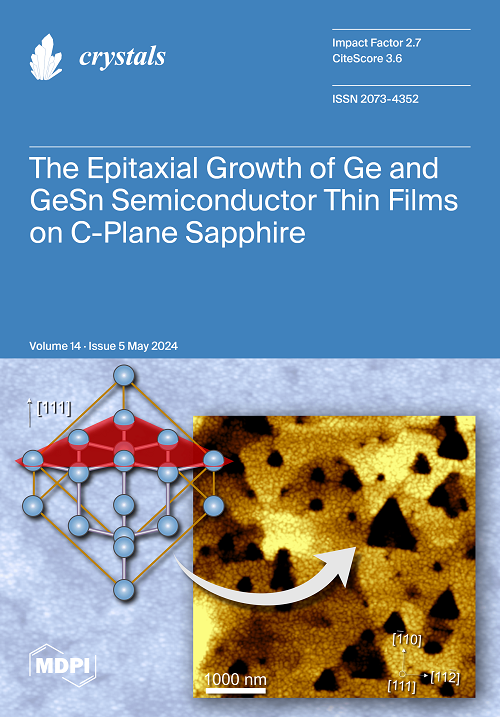通过显微镜、光谱学、微量元素化学和机器学习鉴定 Malysheva 祖母绿(俄罗斯乌拉尔山脉
IF 2.4
4区 材料科学
Q2 CRYSTALLOGRAPHY
引用次数: 0
摘要
Malysheva 绿宝石矿(俄罗斯乌拉尔)拥有悠久的历史和非凡的绿宝石产量。然而,最近的研究表明,马利谢瓦祖母绿与赞比亚、巴西和埃塞俄比亚的其他构造-岩浆相关(I 型)祖母绿在包裹体种类、紫外-可见光-近红外(UV-Vis-NIR)光谱和成分特征方面极为相似。这种相似性为确定祖母绿的产地带来了挑战。本文系统地研究了 Malysheva 祖母绿样本的显微镜学、光谱学和微量元素化学,并汇编了之前报道的上述 I 型祖母绿的成分数据。在此数据集的基础上,采用主成分分析(PCA)和机器学习方法构建了祖母绿产地判别模型。研究结果更新了 Malysheva 祖母绿的产地特征,确认其三相包裹体中的固相成分为菱铁矿,并揭示了两种紫外-可见-近红外光谱模式。此外,还发现了 2600-2830 cm-1 范围内与 HDO 和 D2O 分子有关的独特红外吸收,这可以说明 Malysheva 的产地。机器学习模型的预测结果显示准确率为 98.7%,而对于独立验证集的 Malysheva 祖母绿,预测准确率达到了 100%。该模型的特征重要性排序突出了与祖母绿产地密切相关的微量元素和参数。这些结果表明了机器学习在祖母绿产地鉴定领域的巨大潜力,为珍贵宝石的可追溯性提供了新的见解。本文章由计算机程序翻译,如有差异,请以英文原文为准。
Characterizing Malysheva Emeralds (Urals, Russia) by Microscopy, Spectroscopy, Trace Element Chemistry, and Machine Learning
The Malysheva emerald mine (Urals, Russia) boasts a long history and extraordinary emerald output. However, recent studies indicate that Malysheva emeralds share highly similar inclusion varieties, UV-visible-near infrared (UV-Vis-NIR) spectra, and compositional characteristics with other tectonic-magmatic-related (type I) emeralds from Zambia, Brazil, and Ethiopia. This similarity poses challenges for determination of the emeralds’ origin. This paper systematically investigates the microscopy, spectroscopy, and trace element chemistry of Malysheva emerald samples and compiles previously reported compositional data for the aforementioned Type I emeralds. Based on this dataset, principal component analysis (PCA) and machine learning methods are employed to construct models for emerald provenance discrimination. The results have updated the provenance characteristics of Malysheva emeralds, confirming the solid phase component of their three-phase inclusions as siderite and revealing two UV-Vis-NIR spectral patterns. Furthermore, the unique infrared absorptions related to HDO and D2O molecules within the 2600–2830 cm−1 range were discovered, which can be indicative of the origin of Malysheva. The prediction results of the machine learning model demonstrate an accuracy rate of 98.7%, and for an independent validation set of Malysheva emeralds, the prediction accuracy reached 100%. The feature importance ranking of the model highlights trace elements and parameters strongly correlated with the emeralds’ origin. These results illustrate the enormous potential of machine learning in the field of emerald origin determination, offering new insights into the traceability of precious gemstones.
求助全文
通过发布文献求助,成功后即可免费获取论文全文。
去求助
来源期刊

Crystals
CRYSTALLOGRAPHYMATERIALS SCIENCE, MULTIDIS-MATERIALS SCIENCE, MULTIDISCIPLINARY
CiteScore
4.20
自引率
11.10%
发文量
1527
审稿时长
16.12 days
期刊介绍:
Crystals (ISSN 2073-4352) is an open access journal that covers all aspects of crystalline material research. Crystals can act as a reference, and as a publication resource, to the community. It publishes reviews, regular research articles, and short communications. Our aim is to encourage scientists to publish their experimental and theoretical results in as much detail as possible. Therefore, there is no restriction on article length. Full experimental details must be provided to enable the results to be reproduced. Crystals provides a forum for the advancement of our understanding of the nucleation, growth, processing, and characterization of crystalline materials. Their mechanical, chemical, electronic, magnetic, and optical properties, and their diverse applications, are all considered to be of importance.
 求助内容:
求助内容: 应助结果提醒方式:
应助结果提醒方式:


